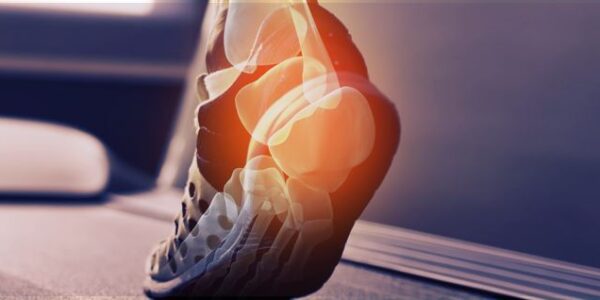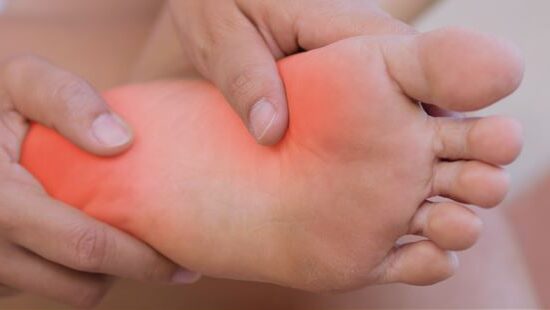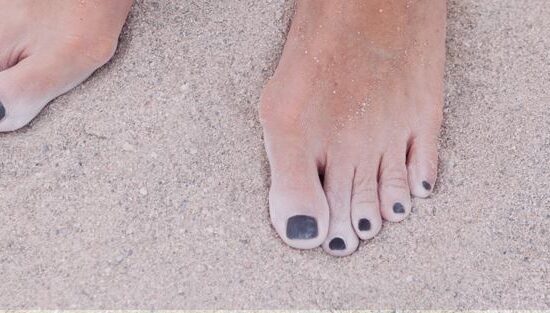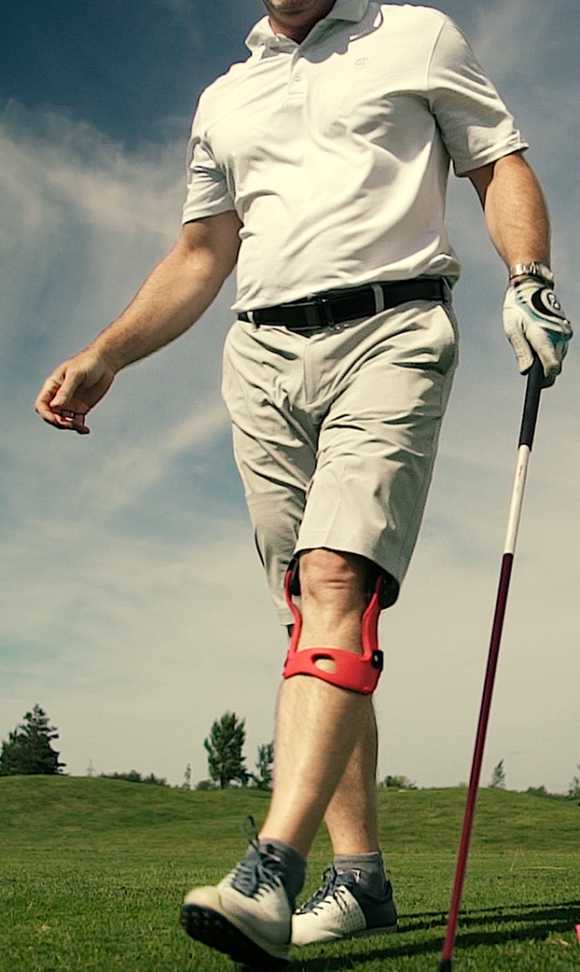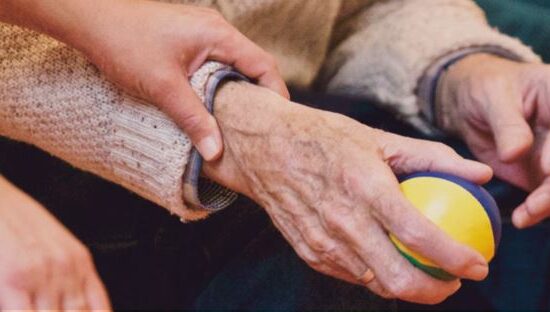A heel spur, also known as a calcaneal osteophyte, develops when the plantar fascia, the tendon supporting the underside of your foot, undergoes repeated microtrauma (running, excessive pronation, etc.). These micro-injuries trigger local inflammation, which the body responds to by depositing calcium to stabilize the affected area. Over time, this calcium builds up into a small, spike-like bony outgrowth, leading to pain in the heel.
What are the symptoms of a Heel Spur?
The first symptoms of a heel spur are sharp, localized pain in the heel, often described as a “hard spot” or crushing pressure when bearing weight. This discomfort is usually felt with the first steps in the morning or after a period of rest and tends to lessen slightly before reappearing later in the day. Other symptoms, like hypersensitivity or even a small bony prominence, may be felt upon palpation.
Chronic irritation over time can lead to persistent heel pain, which interferes with everyday and athletic activities such as walking or running. These symptoms may worsen with continued use or after long periods of standing or physical activity.
What differences between a heel spur and plantar fasciitis?
Plantar fasciitis is an inflammation of the plantar fascia and typically causes diffuse pain along the foot arch, which tends to improve with movement as the tissues warm up. Symptoms of plantar fasciitis often include aching or a dull, throbbing pain in the arch of the foot.
In contrast, a heel spur is a bony growth that forms where the fascia attaches to the heel bone (calcaneus), caused by chronic calcification from repeated microtrauma. Symptoms from a heel spur are highly localized and may include tingling or burning sensations. Simply stated, a heel spur is often a consequence of plantar fasciitis, which is why the symptoms can be quite similar.
What causes a heel spur ?
Multiple factors can lead to the development of a heel spur. Many of these are similar to the causes of plantar fasciitis:
- Flat foot or cavoid feet increase tension on the plantar fascia, making inflammation more likely.
- Inappropriate footwear, such as worn soles, flat shoes, or high heels.
- Tight calf muscles and lack of flexibility in the plantar fascia.
- Aging, excess body weight, and high-impact activities like running.
- Genetic predisposition or arthritis.
Individually or combined with overuse (running, jumping, prolonged standing), these factors increase the risk of developing a heel spur.
How is a heel spur diagnosed?
Because the symptoms are usually well defined, a biomechanical evaluation is often enough to diagnose a heel spur. To confirm the diagnosis, a radiograph is typically recommended, as the bony outgrowth is clearly visible on imaging.
Treatment solutions to relieve heel spur pain
Here are several effective treatments to relieve heel spur pain and help prevent its recurrence.
Use custom orthotic insoles
Custom-made foot orthoses, created from a mold of your foot, help distribute weight evenly and reduce pressure on the plantar fascia and heel. By correcting biomechanical imbalances, they promote faster healing and are an effective treatment for reducing symptoms of heel spurs and other foot-related discomforts.
Wear orthopedic shoes
Wearing well-designed footwear is key to relieving heel spur pain and preventing flare-ups.
Choose models with:
- A thick sole and a raised heel (about 2.5 cm or 1 inch) to reduce pressure on the heel bone;
- Arch support and lateral reinforcements to control pronation/supination;
- A rigid upper to support the ankle and distribute pressure evenly throughout the day.
Perform targeted exercises
Perform daily exercises to stretch the plantar fascia using an elastic band or by rolling the foot over a ball or roller. Also, strengthen your calf muscles through heel-raise exercises, which enhance Achilles tendon flexibility and relieve tension at the heel attachment point. These movements reduce microtrauma, stimulate tissue regeneration, and help prevent heel spur recurrence. These treatments target both the symptoms of the heel spur and the underlying causes of the condition.
Allow time for rest and supportive care
At the first signs of foot tension or heel pain, rest is crucial to reduce inflammation, a key cause of heel spurs. Limit all physical activity, especially high-impact sports, to avoid worsening the condition and exacerbating symptoms.
Long-lasting relief for heel spurs
Tired of dealing with persistent heel pain? Now is the time to act. At our 20 clinics across Quebec, our orthotists draw on over 65 years of expertise to evaluate your condition and develop a personalized treatment plan. These specialized treatments are designed to alleviate heel spur symptoms while promoting healing and comfort.
Schedule a biomechanical assessment today and receive a targeted, professional approach to regain your comfort.
For more information on foot pain, explore our blog or book an appointment with one of our specialists today.

